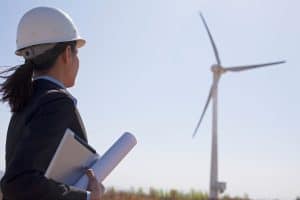Green steel is at the forefront of sustainable industrial development, aiming to revolutionize the steel industry and contribute significantly to achieving global climate goals. In this blog, we will delve into the concept of green steel, its significance, its production methods, and the ongoing efforts to promote its adoption.
What is Green Steel?
Green steel, also known as clean steel or eco-friendly steel, refers to the production of steel without relying on fossil fuels. Instead, alternative low-carbon energy sources such as hydrogen and electricity are utilized in the production process. This approach significantly reduces carbon emissions, making it a pivotal part of the world’s transition to a more sustainable future.
Why Green Steel Matters?
- Carbon Emissions Reduction: Green steel production can substantially reduce carbon emissions compared to traditional steelmaking methods, supporting global efforts to combat climate change.
- Sustainable Supply Chains: Adopting green steel promotes sustainable supply chains, contributing to a more environmentally conscious and responsible industry.
- Market Competitiveness and Demand: As awareness of climate issues grows, customers are increasingly demanding sustainable products, making green steel a competitive choice in the market.
- Job Creation and Economic Growth: The transition to green steel production creates new job opportunities and stimulates economic growth in the renewable energy and clean technology sectors.
- Technological Advancements: Advancements in technology have made green steel production more efficient and cost-effective, making it a viable alternative for large-scale steel production.
- Meeting Net-Zero Targets: Achieving net-zero carbon emissions by 2050, a crucial target in the fight against climate change, necessitates the widespread adoption of green steel production techniques.
- Competing Globally: In an increasingly eco-conscious global economy, green steel provides a competitive edge to steel-producing nations, facilitating international trade and collaboration in decarbonization efforts.
Production Methods
Several production methods are being explored to achieve green steel:
- Electrification: Utilizing renewable electricity sources like wind and solar to power steel production, reducing reliance on fossil fuels.
- Hydrogen-based Processes: Incorporating hydrogen as a clean energy source in steelmaking, known as hydrogen direct reduction, to reduce emissions.
- Carbon Capture and Storage (CCS): Implementing technologies to capture and store carbon dioxide emissions generated during steel production.
The Importance of Green Steel in Decarbonization
Sustainable and green steel production plays a crucial role in achieving net-zero carbon emission targets. Traditional steel production is one of the largest industrial sources of carbon emissions globally. Green steel provides a way to mitigate this impact and supports a transition to a cleaner and greener future.
The EU-US Green Steel Showdown: Decarbonizing Trade
The EU and the US are engaging in a significant effort to decarbonize the steel industry through green steel production. This initiative not only sets an example for other nations but also promotes sustainable trade practices that align with climate goals. By investing in green steel technology and trade, both regions can contribute to a more sustainable global economy.
Challenges and the Way Forward
- Investment in Infrastructure: Transitioning to green steel requires significant investment in renewable energy infrastructure and technology.
- Scaling Up: To make a substantial impact, green steel production needs to scale up globally.
- Policy Support: Governments and international bodies must provide incentives and policies to encourage green steel adoption.
In conclusion, green steel is not just a buzzword; it is a fundamental solution to reduce the steel industry’s carbon footprint. With the world’s focus on sustainability and decarbonization, green steel is a vital component of our journey towards a greener future.






